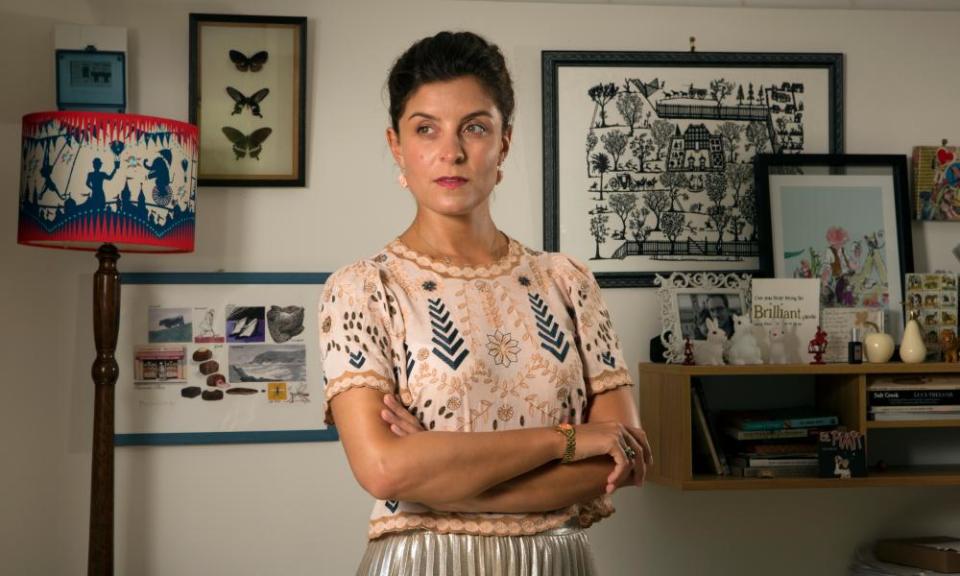Greek Myths: A New Retelling by Charlotte Higgins; Medusa: The Girl Behind the Myth by Jessie Burton – review

Weaving women and goddesses burst into life in two compelling new versions of the Greek myths
Retellings of classical myths may be all the rage in publishing but, as Charlotte Higgins notes in the introduction to Greek Myths, her own erudite and exhilarating collection, it’s a trend as old as the stories themselves. Though certain versions came to dominate, there was no canonical account of “the Greek myths”, even in antiquity. As she puts it: “Bubbling, argumentative diversity is everywhere in classical literature.”
As early as the 5th century BC, Euripides was using these dramas as a lens through which to view his own times more clearly, and their enduring scope for mapping extremes of the human experience continues to lure sharp writers. “The Greek myths are the opposite of timeless: they are timely,” writes Higgins, the Guardian’s chief culture writer.
What is relatively new is the way in which female mythological characters are now being placed at the centre of narratives in which they’ve traditionally been peripheral. Taking her lead from the likes of Pat Barker and Madeline Miller, Higgins’s Greek Myths: A New Retelling is narrated by female characters. Or rather, it’s woven by female characters, because to give voice to this very 21st-century impulse, she uses a classical literary convention known as ekphrasis, or the telling of tales through descriptions of striking works of art – in this case, tapestries.
The words “text” and “textile” share a common Latin root, and throughout antiquity there was a persistent connection between the two. Higgins seeks to reassert it here, depicting Helen of Troy sitting at her loom, weaving images of the war for which she was a pretext – “there was always an excuse for war, some symbol or stand-in. It was often a woman.” The Athenian princess Philomela, her tongue cut out, gives an account of rape and imprisonment through the stories she laces into the border of a tapestry that later inspires a gruesome denouement. And a mortal named Arachne challenges the goddess Minerva to a tapestry-making contest.
The collection features eight stories in all, its other weaver-narrators including Athena, inventor of the loom, and Penelope, who, still awaiting Odysseus’s return after 20 years, puts off pushy suitors by telling them she must first finish making her father-in-law’s shroud (every night she unravels her day’s work). Together, these women and goddesses beckon us into a land of magic and monsters, impossible tasks and serpentine journeys, while simultaneously underscoring the importance of weaving – generally women’s work – in the classical world.
Gusseted with a map, family trees, notes and glossaries, this feminist corrective oddly recalls the kind of old-fashioned mythological compendia that Higgins grew up with. She first fell under the spell of the myths when an older brother bought her a copy of Kenneth McLeish’s Children of the Gods. Initially, she suggests, it was the pictures that enthralled her – emphatic illustrations by Elisabeth Frink that exude dark solidity.
Higgins’s own volume is illustrated by the Turner prize-winning Chris Ofili, whose drawings are charming and airy, suggestive in spirit of Matisse’s pencil sketches. While they undoubtedly beautify an already alluring object, the deeper Higgins leads the reader into her forest of tales, the less necessary they feel.
Full of rage and self-loathing, Medusa grows ravenous for connection, ‘a girl on the edge’
Jessie Burton’s retelling, Medusa: The Girl Behind the Myth, is aimed at YA readers, and there’s a graphic novel vibe to its bold jacket, from which its protagonist stares out, defiant and compelling (only beneath the dust jacket are those legendary asps visible). Within are illustrations by the Northumberland-based Olivia Lomenech Gill, an artist whose work at its strongest has something of Frink’s about it. Her full-page colour images harmonise perfectly with a text that, though not always as subtle as it could be, seizes from the very first sentence, its prose pulsing with irresistible, rhythmic energy.
Burton’s Medusa addresses the reader directly. Following her rape by the sea god Poseidon – for which Athena punished Medusa by turning her into a gorgon – she fled with her winged sisters to an island where, full of rage and self-loathing, she grows ravenous for connection, “a girl on the edge”. She is four years into her exile when a beautiful young man and his dog land on the island. He is Perseus, and he has been sent, against his will, to kill the mythical creature she has become.
Adding some canny twists and turns, Burton uses Medusa’s story to ruminate on themes ranging from the trauma of sexual assault and the toxicity of gender stereotyping to beauty ideals and female autonomy. Hers is a version rooted unmistakably in the #MeToo movement and, as such, it’s destined to become as much an artefact of our own age as it is an illumination of the ancient past. Throughout, its seriousness is balanced by colloquial quips (“Nothing to look at here…”, Medusa knows she should tell Perseus) and sly humour. Each of those restive snakes, for instance, acquires its own name and personality.
“Once activated by a fresh imagination, the stories burst into fresh life,” Higgins observes. It’s true of not just her own luminous, astute retellings, but also of Burton’s bracing and powerful Medusa.
• Greek Myths: A New Retelling by Charlotte Higgins is published by Vintage (£20). To support the Guardian and Observer order your copy at guardianbookshop.com. Delivery charges may apply
• Medusa: The Girl Behind the Myth by Jessie Burton is published by Bloomsbury (£14.99). To support the Guardian and Observer order your copy at guardianbookshop.com. Delivery charges may apply

 Yahoo Finance
Yahoo Finance 